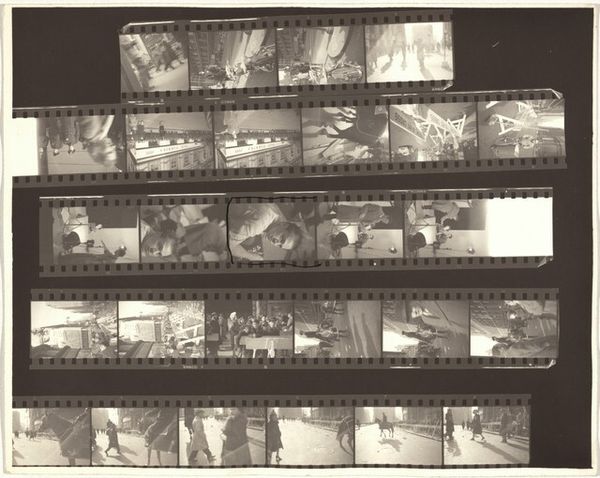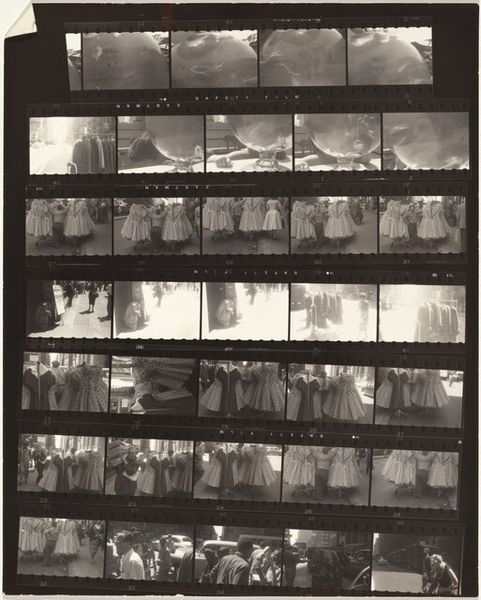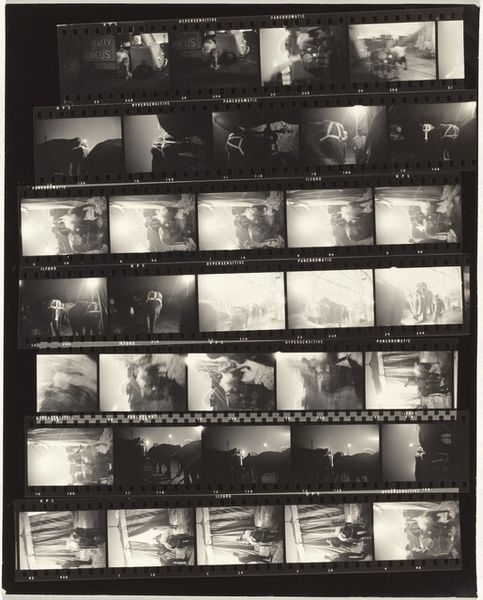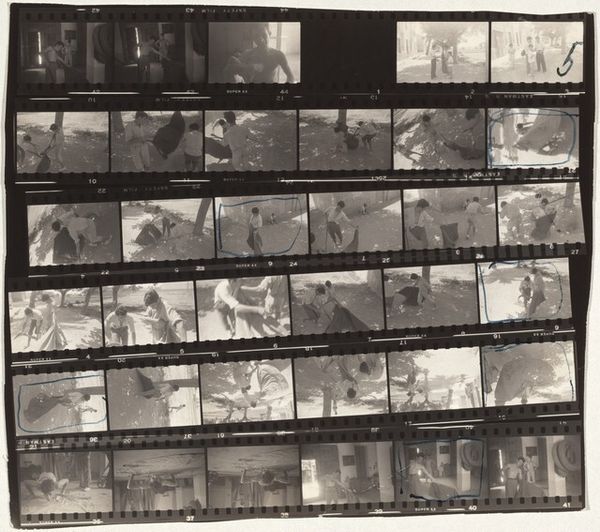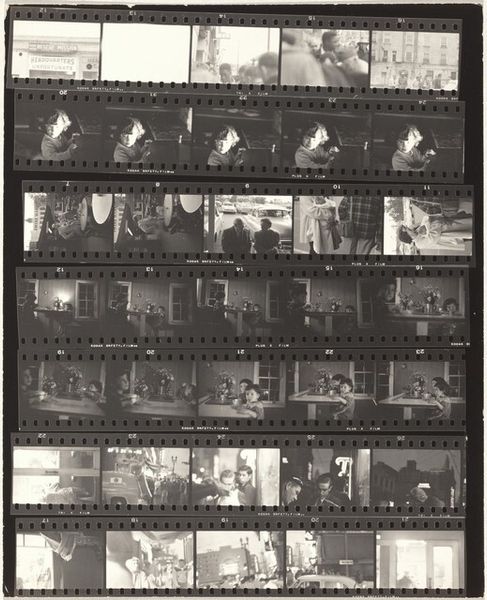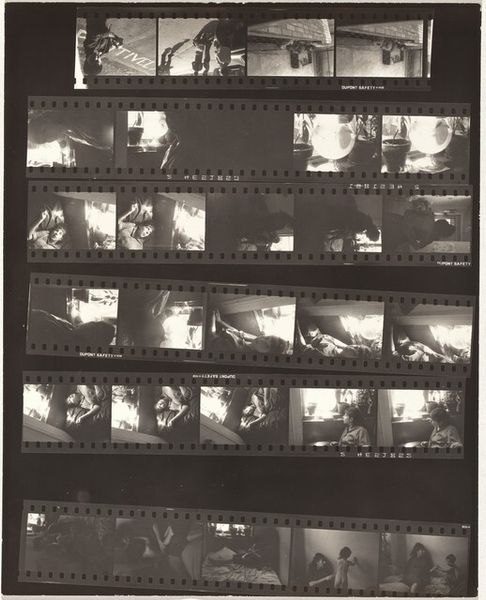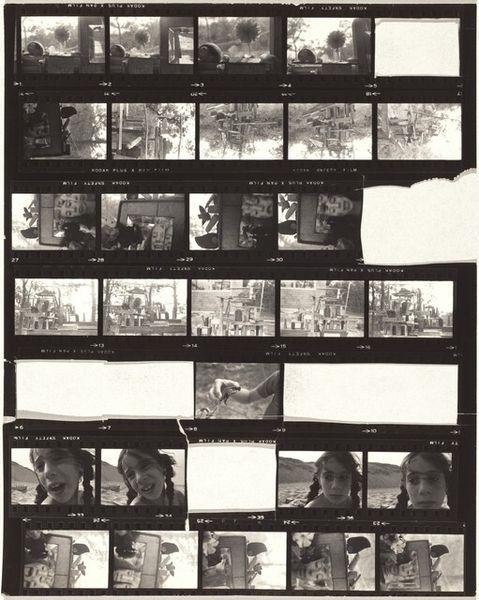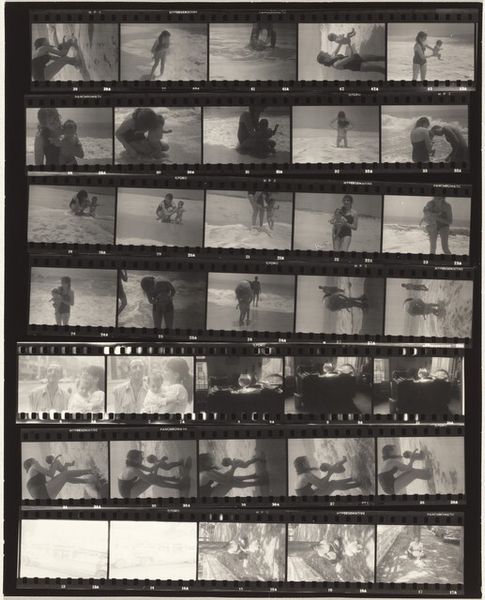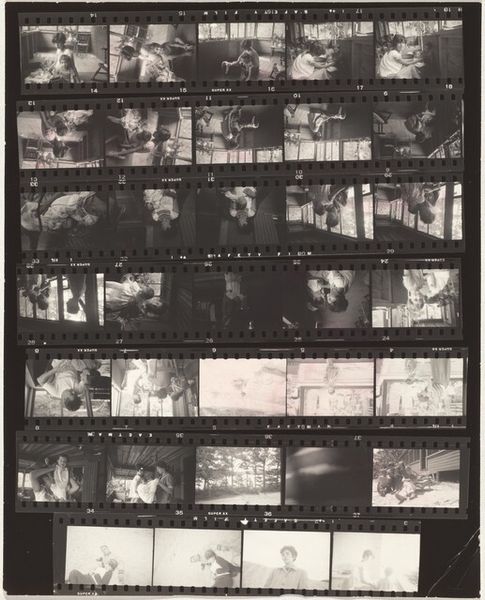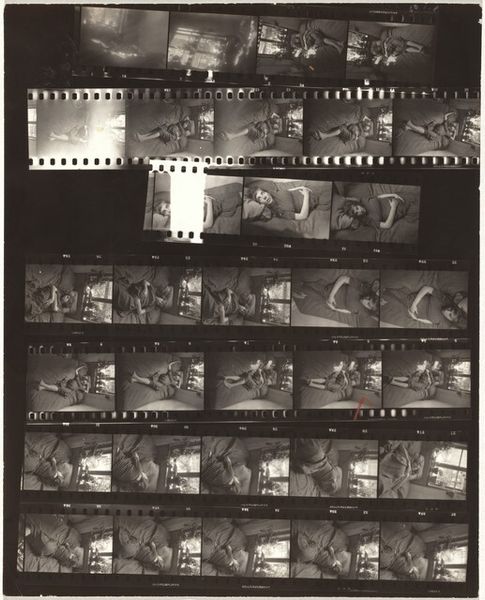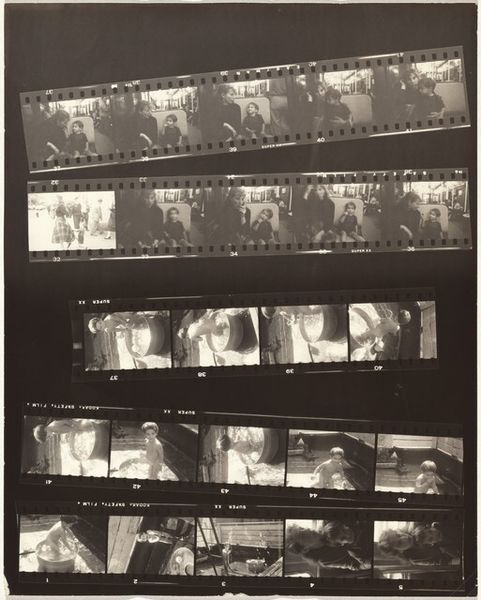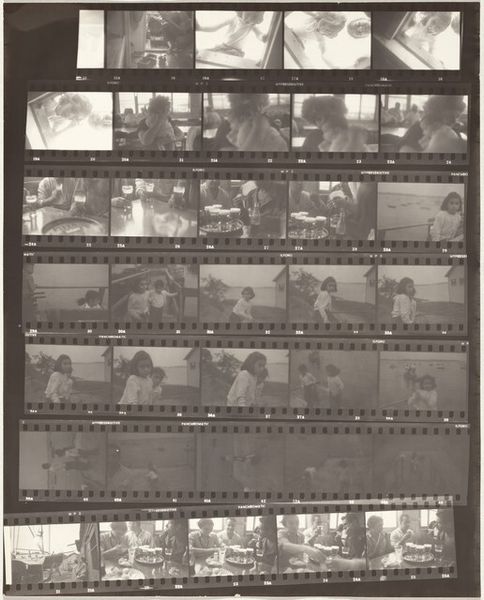
#
excavation photography
#
dark object
#
film photography
#
dark hue
#
warm monochrome
#
old memory
#
dark shape
#
monochrome photography
#
gloomy
#
shadow overcast
Dimensions: overall: 25.2 x 20.1 cm (9 15/16 x 7 15/16 in.)
Copyright: National Gallery of Art: CC0 1.0
Curator: This is Robert Frank's "Family--Wellfleet 16", a photo contact sheet from 1962. What strikes you immediately about this arrangement of images? Editor: The repetition, I suppose. It's not one single image but many, a sort of fractured memory reel. It feels deeply personal and rather…intimate, almost voyeuristic. Curator: Exactly. Frank's work often blurred the lines between observer and participant. Here, the contact sheet as an art form is fascinating, right? A very personal document used in the editing process is made into the final work of art, shifting our perspective on photography's relationship to both commerce and narrative. It reveals so much. Look at the frames depicting a seaside landscape or domestic interiors. These snapshots tell a kind of story through sequence and the subtle variations. Editor: A story, or perhaps multiple stories vying for attention. There are some repeated motifs, interiors framing glimpses of landscape for instance, children at play on the beach – themes about childhood or innocence perhaps, contrasted with an enclosed and protected space. Frank uses this technique of contrasting dark interiors with bright exteriors quite a bit. Curator: Yes, and that interplay of light and shadow could reflect broader social anxieties. This was taken at a time of social change, growing discontent. The personal and the political, always intertwined in Frank’s art, invites us to contemplate individual experiences within that social framework. Think about how domestic spaces become battlegrounds of sorts during periods of unrest or unease. Editor: The image, as an artifact, gives insights into his methods as a documentarian and creator. It forces the viewer into a place of complicity; the contact sheet would traditionally only have been seen by the photographer, or a small production team in service to the artist. Curator: I agree. And think about how we tend to view history, filtered through dominant narratives. Here, Frank is using what looks like a record of quotidian reality to interrogate these narratives, making the work about the medium and method just as much as it's about the message. He's making us aware of whose stories are deemed worthy and how those choices shape public opinion. Editor: Well, I am left contemplating Frank's process but more generally about how the politics of personal experiences affect artistic practices and aesthetic philosophies. Curator: Ultimately, this contact sheet reminds us to look at the world around us—the familiar, the mundane—with fresh eyes and critical understanding. To remember, everything is inevitably political.
Comments
No comments
Be the first to comment and join the conversation on the ultimate creative platform.
